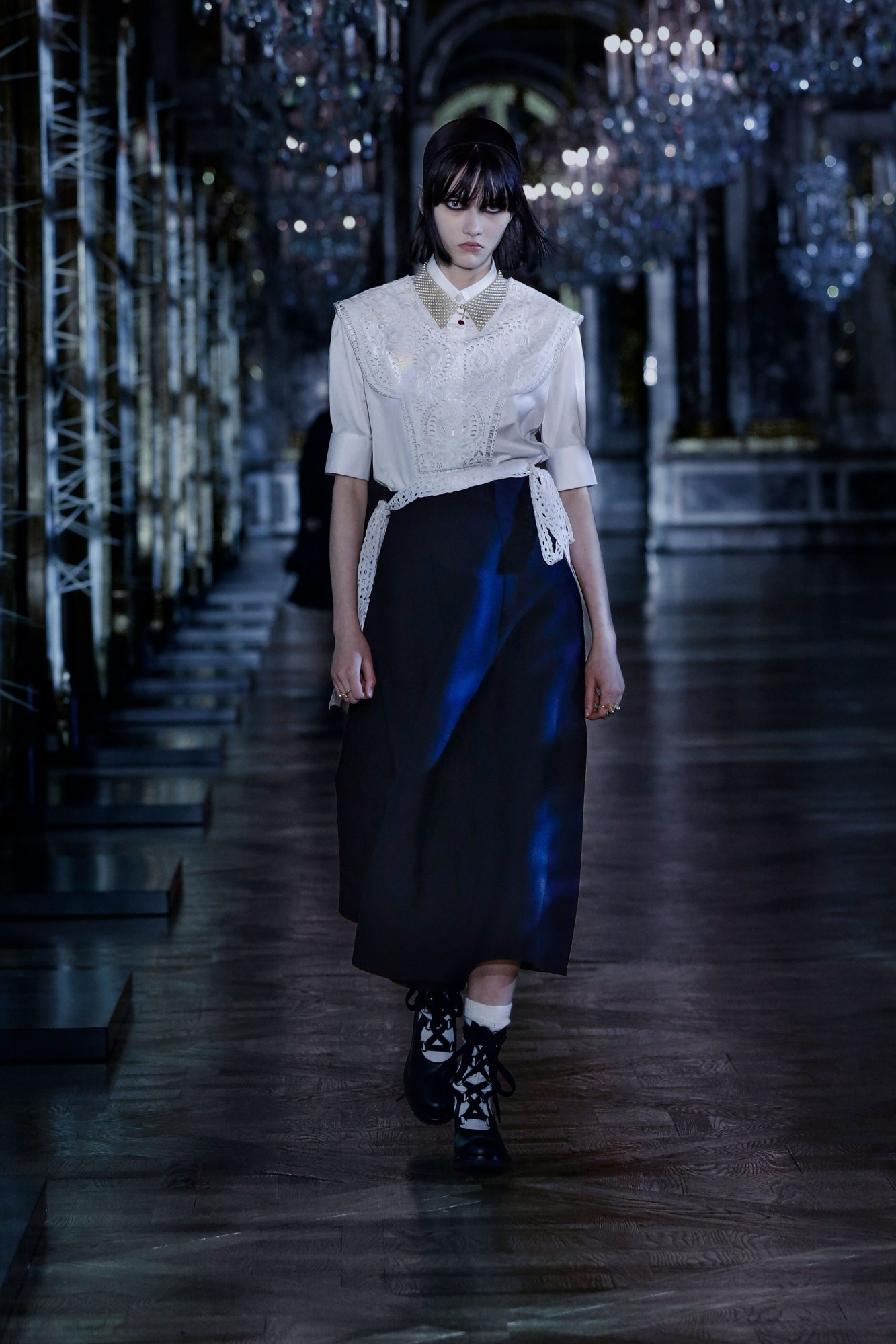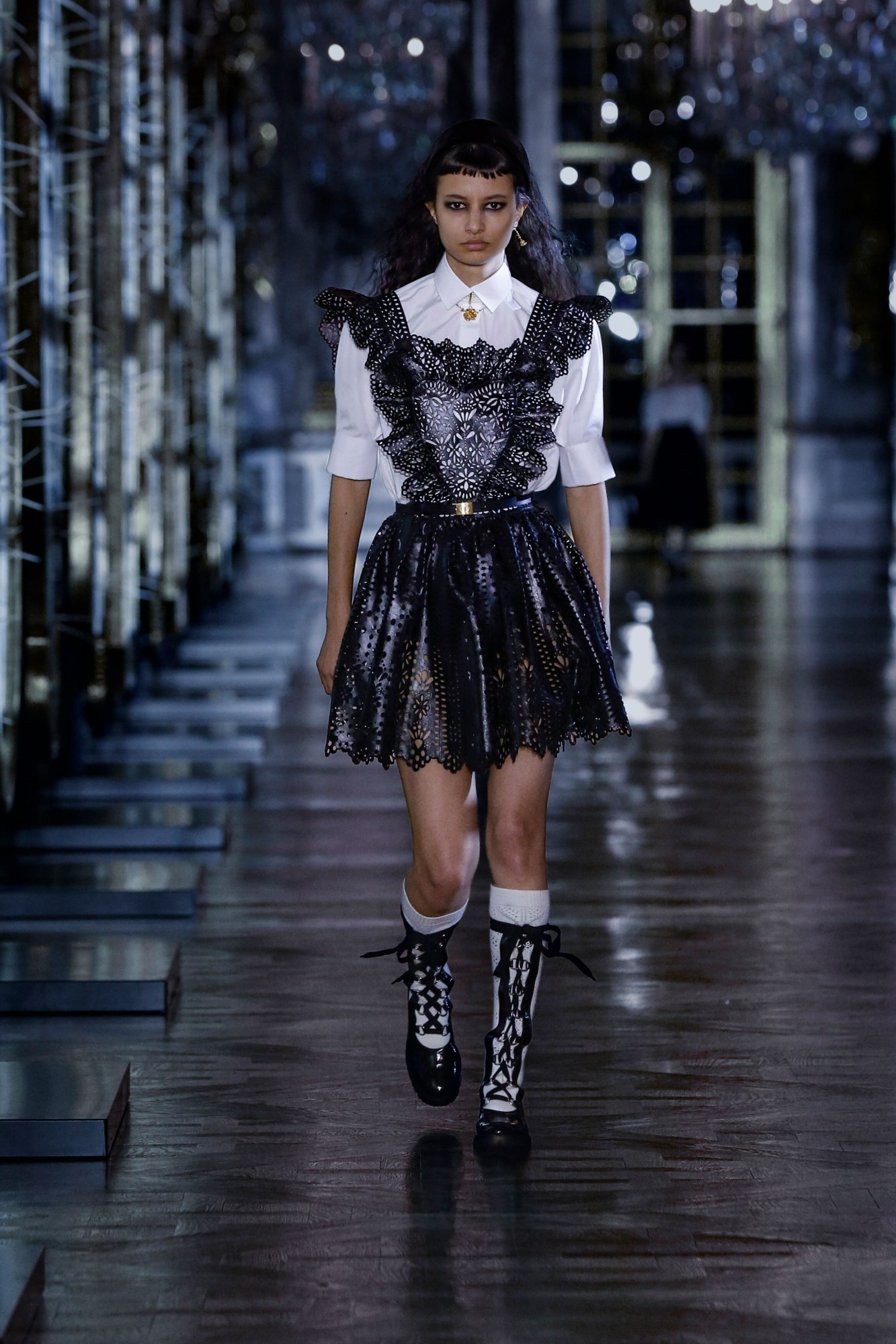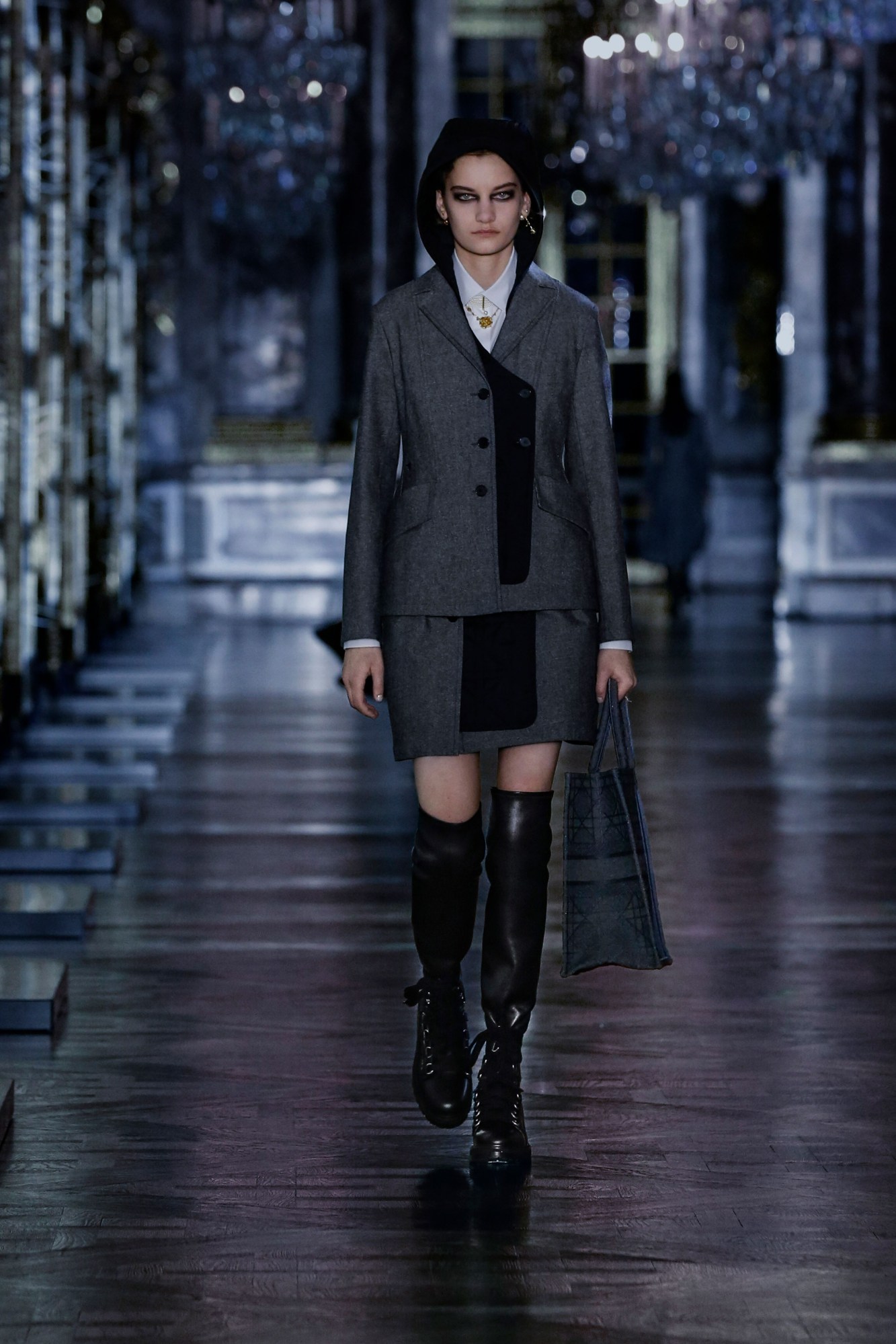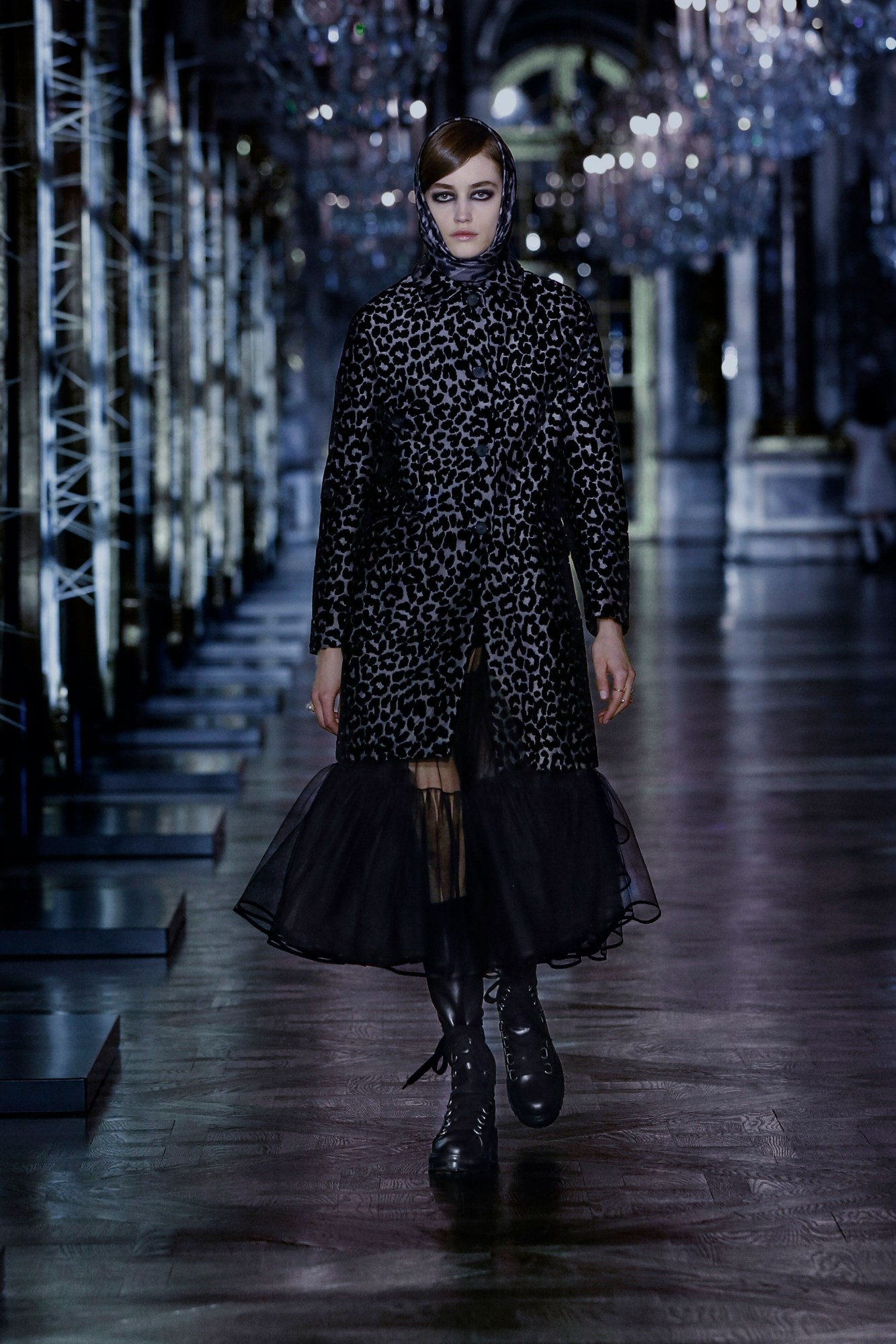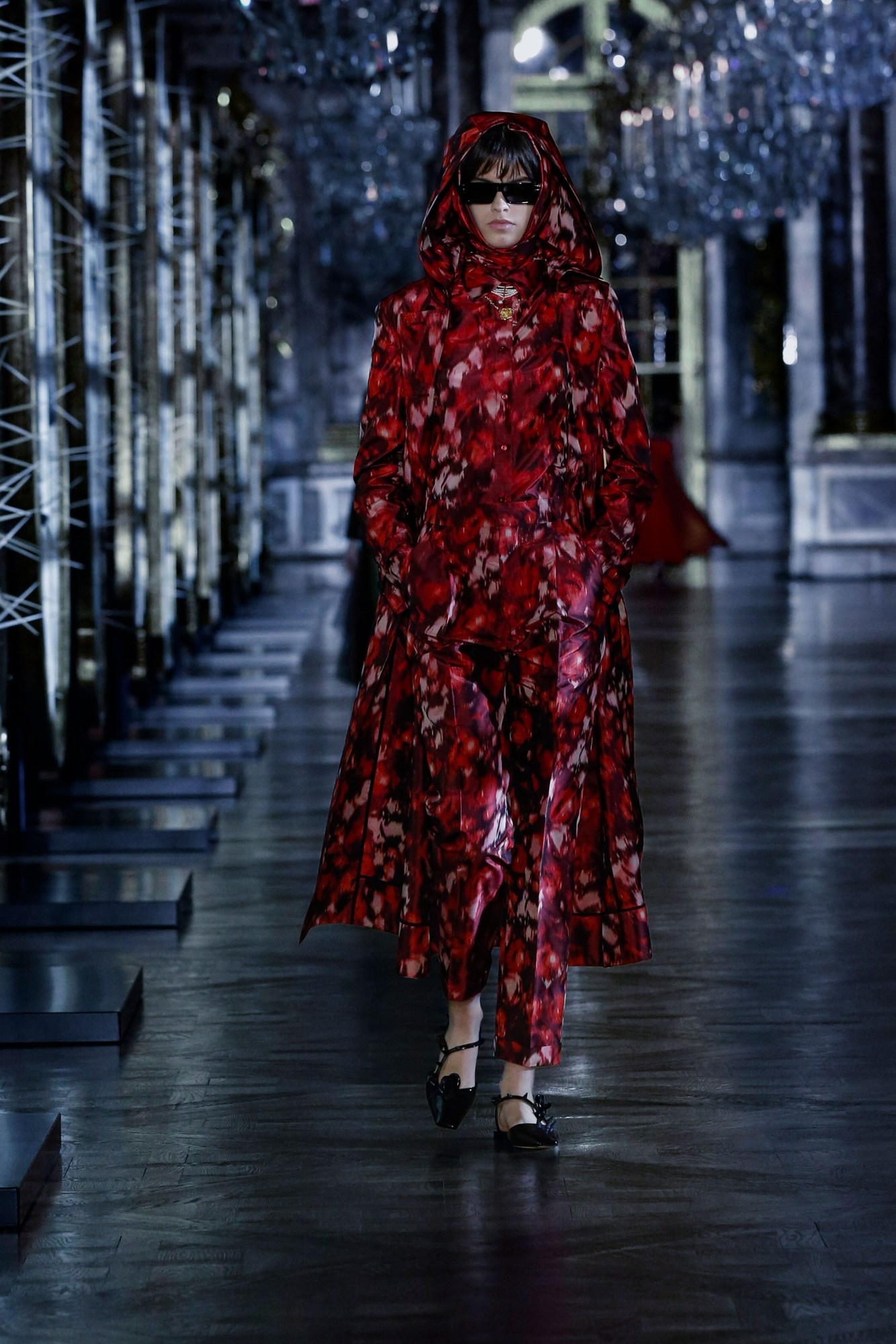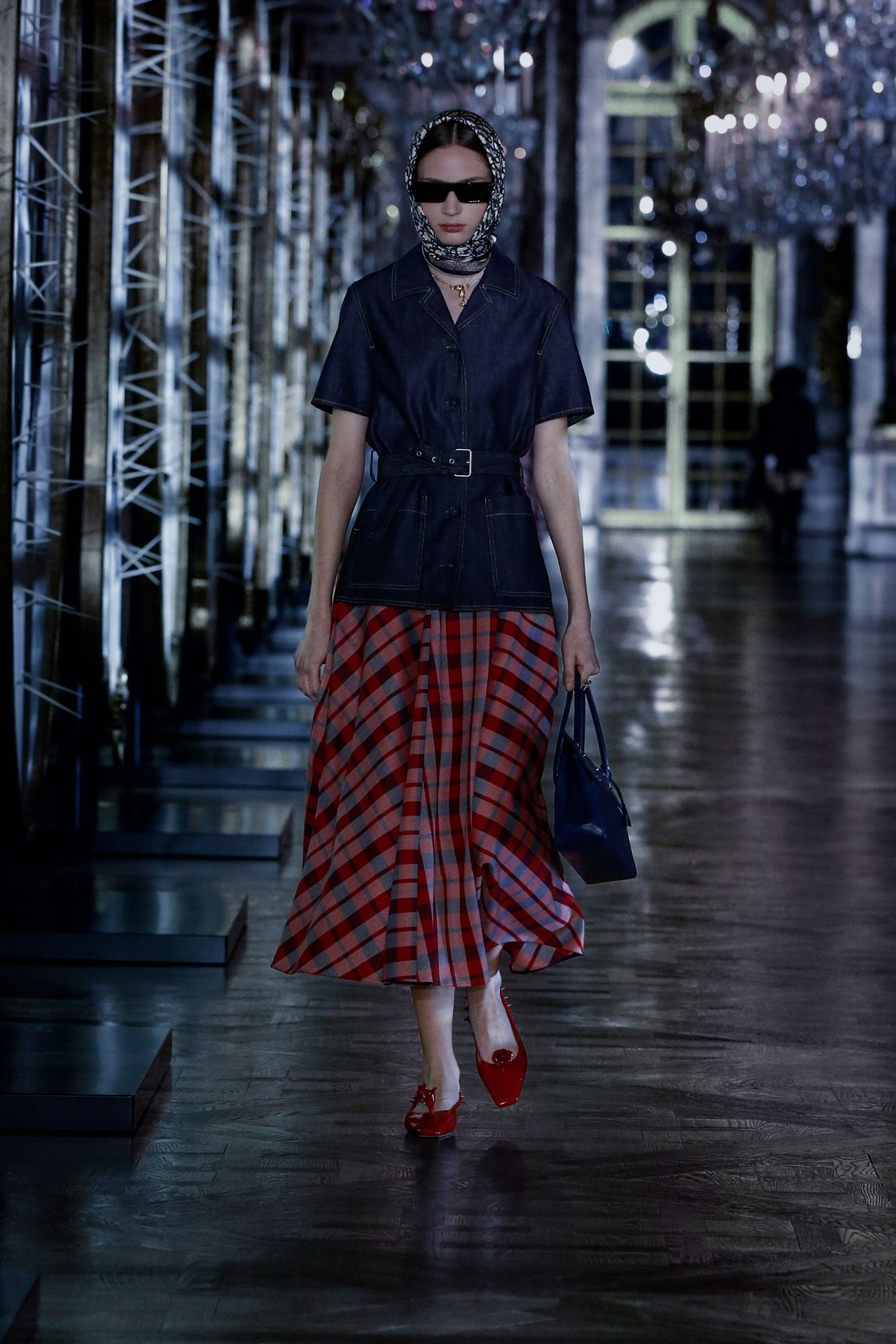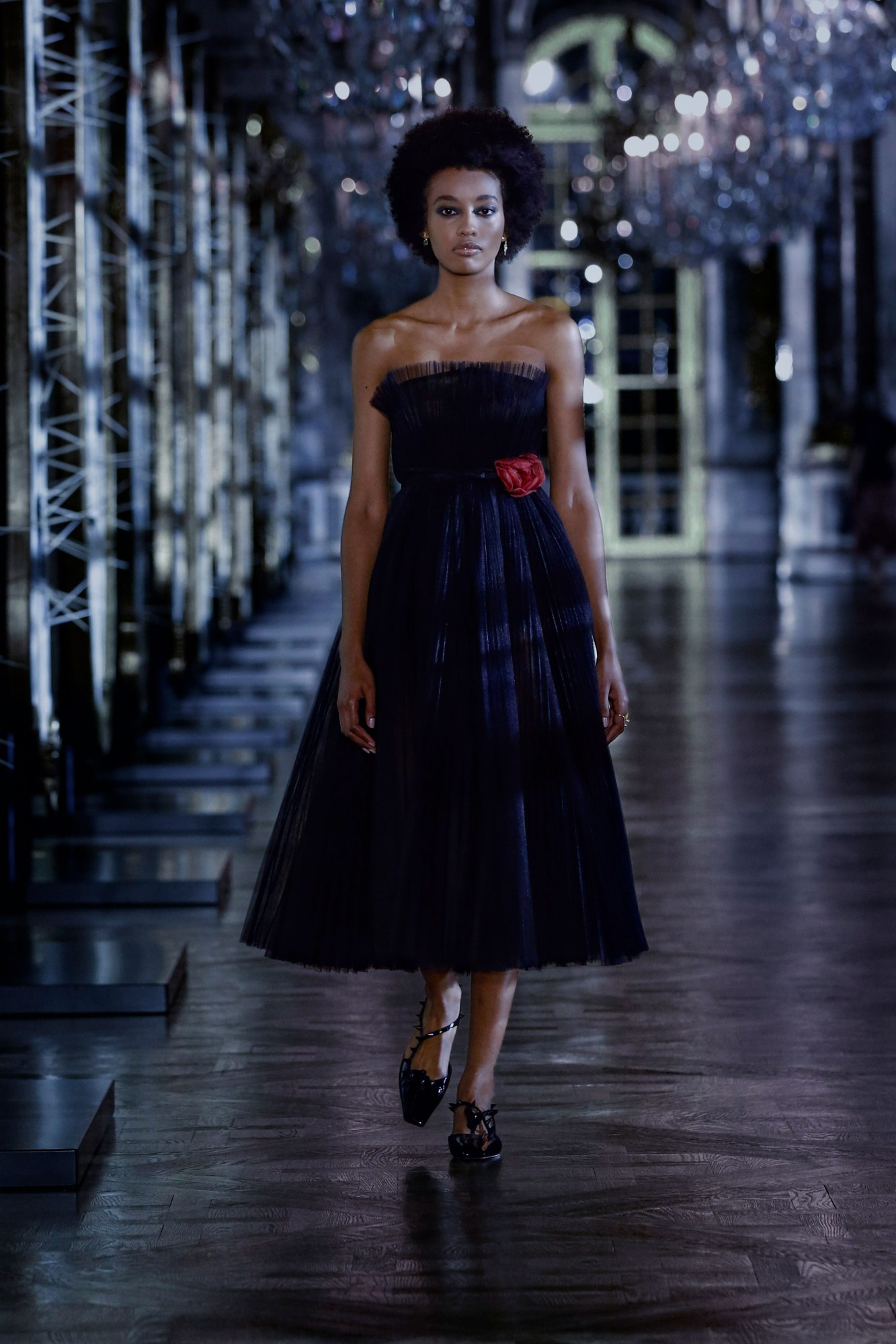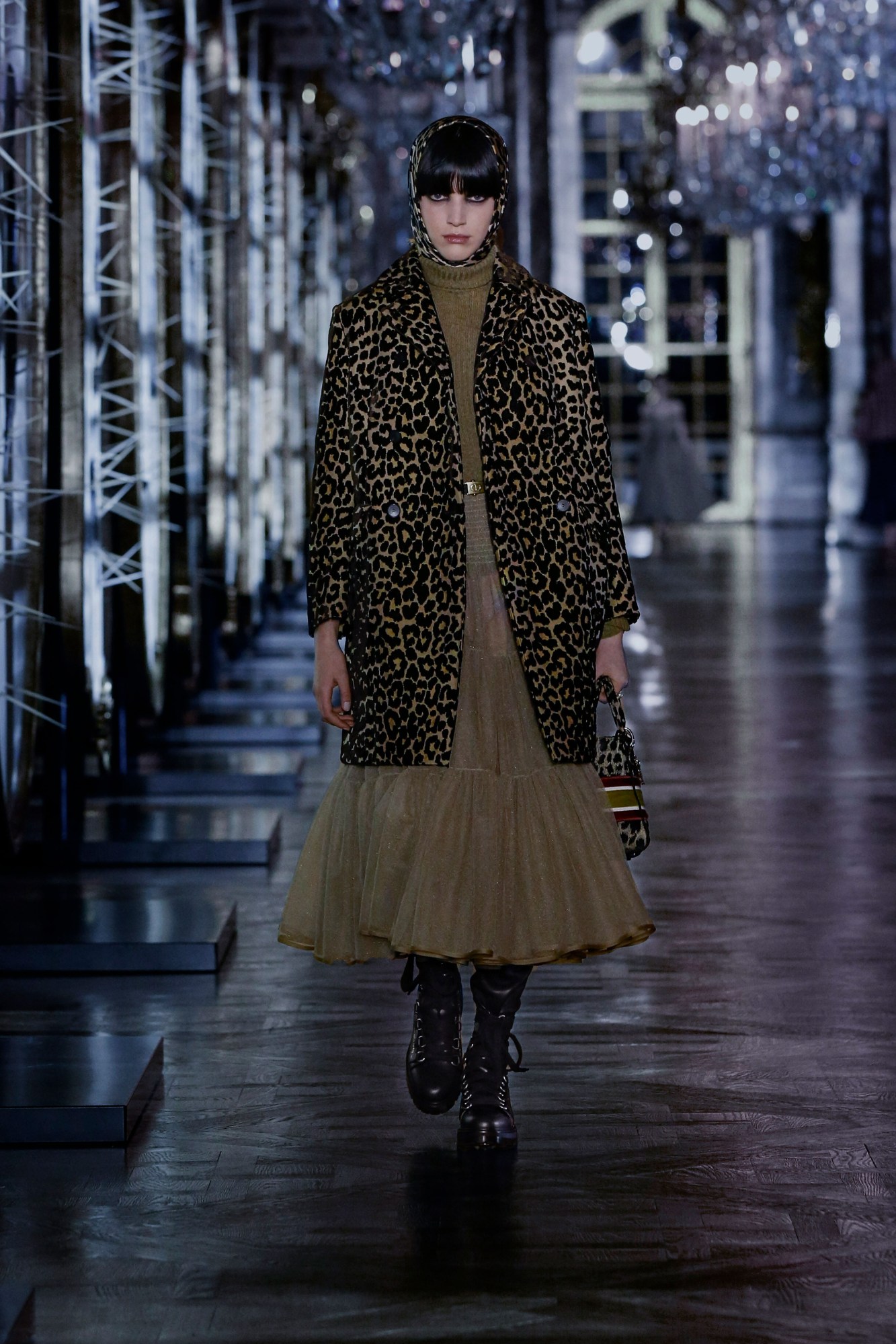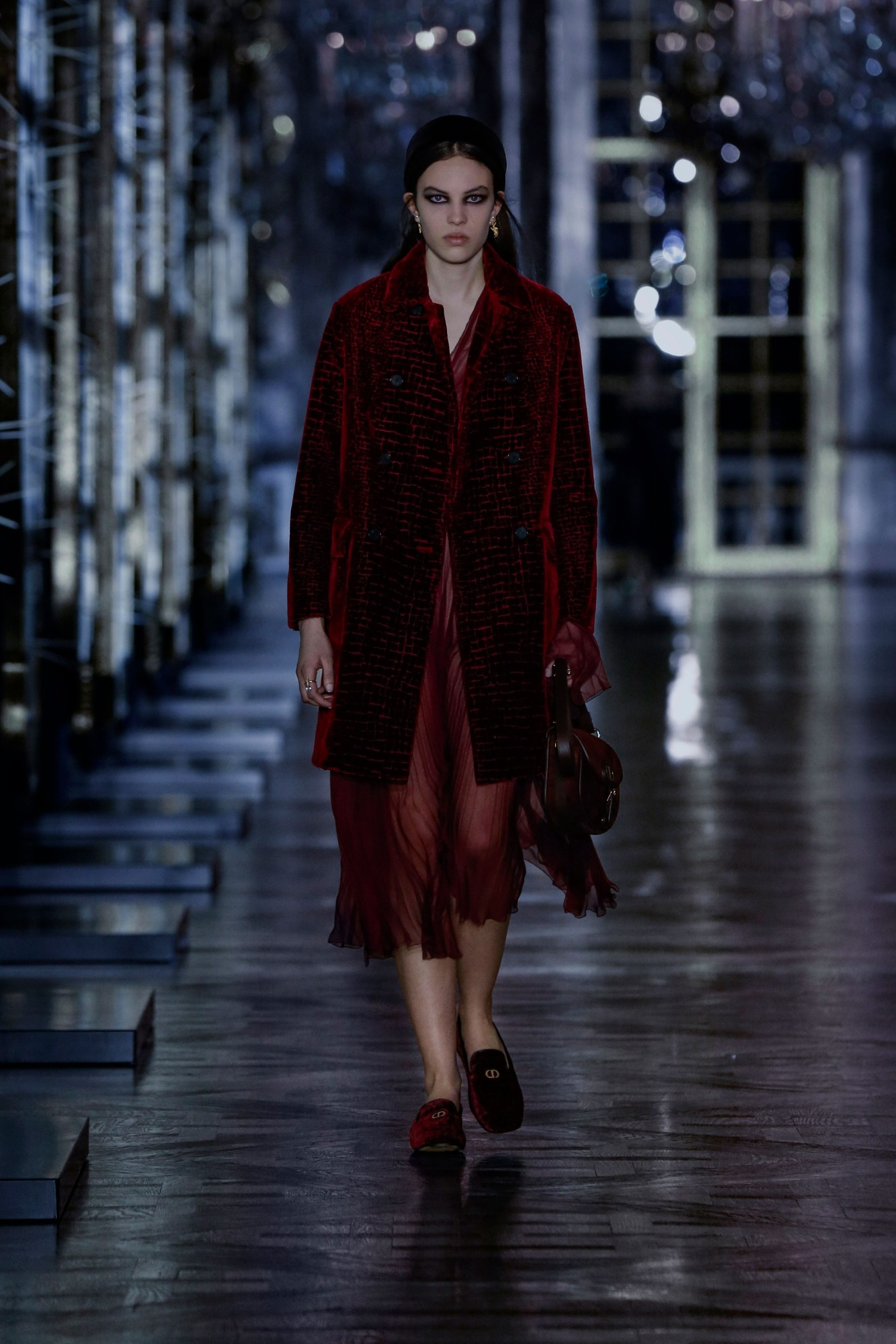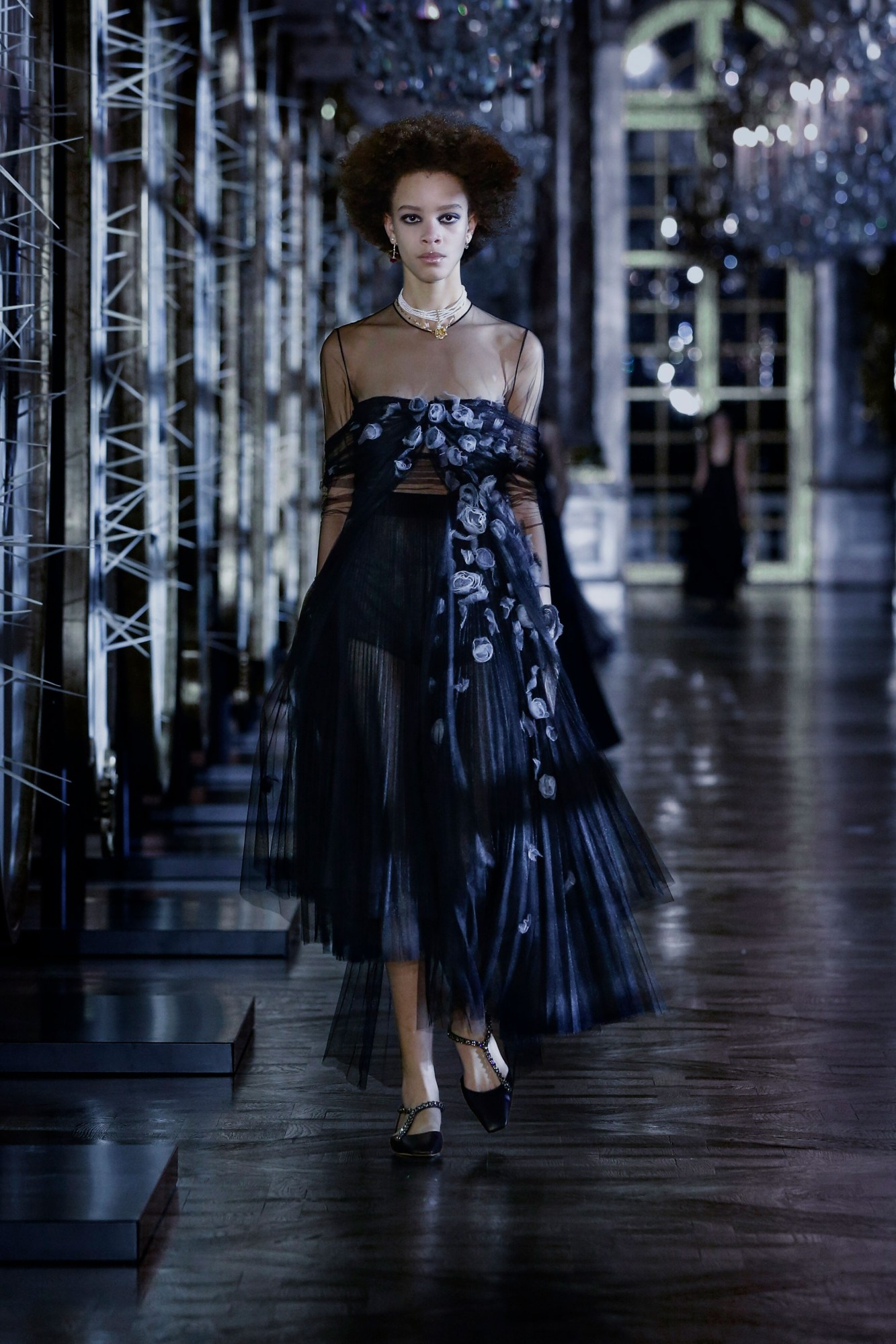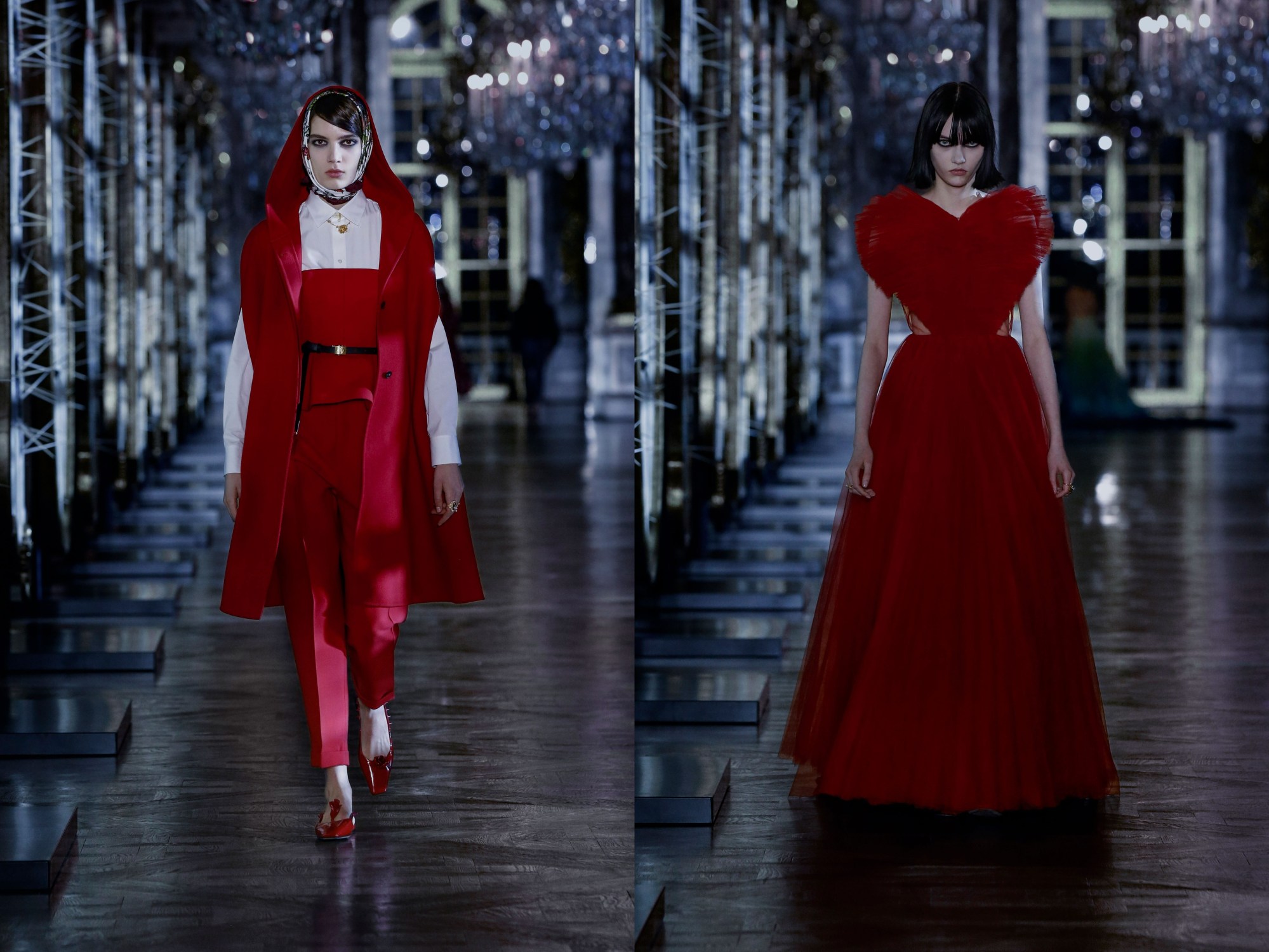Fashion loves a fairy tale. Usually, it’s ‘Once Upon a Time’ (very on-brand for origin stories of heritage houses) followed by ‘Happily Ever After’, the transformative moment when a protagonist becomes a princess. Maria Grazia Chiuri is a designer interested in filling in the blank space between those two lines, reframing the narrative of women and their dreams, desires and art. It’s no coincidence that her AW21 show for Dior falls on International Women’s Day, and at the Palace of Versailles. Dior is fashion for modern-day queens! MGC, after all, has made feminism her bestselling accessory, working with women artists ever since she joined the fashion house five years ago. Her latest show was an ode to those fairy tales, but rather than the usual trope of women finding salvation through love, she looked to the lesser-known group of women in the seventeenth-century court of Versailles. Madame d’Aulnoy and Madame Leprince de Beaumont wrote a number of fairy tales, publishing them under pseudonyms. Maria Grazia points out the way they countered the male gaze by presenting “heroines who follow their own path and assert their will despite obstacles”.
“Fairy tales are something that fascinates me because there are aspects that are close to the fashion world,” she told us. “They help you to dream of becoming another character, and in some ways, clothes do too.” Though fairy tales are usually associated with the Elysian dreams of haute couture, the Italian designer wanted to reimagine them as grounded realities in her AW21 ready-to-wear collection. She reunited with choreographer Sharon Eyal, who she collaborated with on her SS19 show, and also enlisted artist Silvia Giambrone to create a moody mise-en-scène in Versailles’ famous Hall of Mirrors, where the walls of mirrors were covered with spikes and dancers shuffled around in the shadows. It was here that the show took place in complete darkness, with models emerging in buttoned-up shirts worn under schoolgirl pinafore dresses, dramatically hooded coats and all-over prints that Maria Grazia likened to florals masquerading as camouflage. Little Red Riding Hood was given a Dior makeover in a scarlet cape and cigarette pants, while a cloud of princess-worthy tulle dresses closed the show. But the atmosphere was far from a jolly Disney fantasy; this was an altogether darker take on the fairy tale ending, feeling ominous at times.
It may not have been what you would expect from a Dior show at Versailles. In fact, John Galliano staged the French house’s 60th anniversary affair there with a spectacularly over-the-top homage to artists and the hourglass silhouette, but Maria Grazia wanted to deconstruct the palace’s usual connotations, and think outside the box. “The idea of Versailles came from the idea of the fairy tale we wanted to instigate from our point of view,” she said of working with Sharon and Sylvia. She wanted to put women at the forefront of the story, both behind-the-scenes and in front of the camera, and so the result was a reflection of the reality of fairy tales, which is — if you think about it — that most of them centre on a woman facing the tidal force of patriarchal oppression. If there was ever a message to be received on International Women’s Day 2021, then let it be that princesses, even real ones, are much more than a tiara and ballgown. They have a voice, too.
